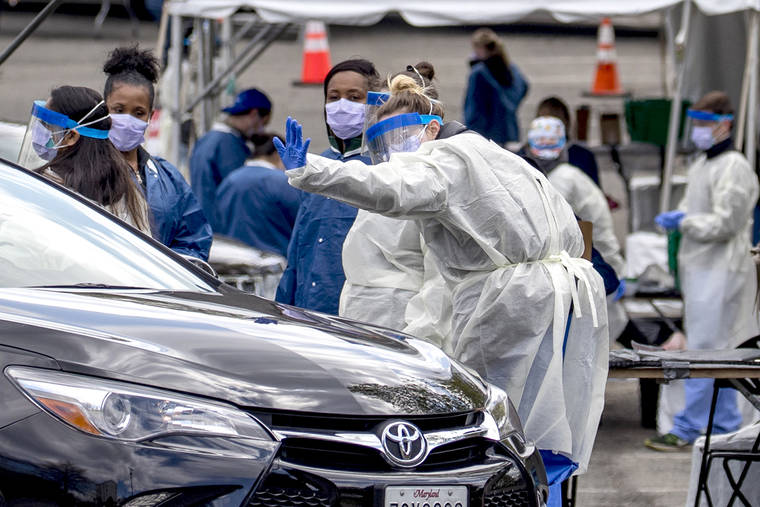WASHINGTON — The United States is struggling to test enough people to track and control the spread of the novel coronavirus, a crucial first step to reopening parts of the economy, which President Donald Trump is pushing to do by May 1.
Trump on Thursday released a plan to ease business restrictions that hinges on a downward trajectory of positive tests.
But more than a month after he declared, “Anybody who wants a test, can get a test,” the reality has been much different. People report being unable to get tested. Labs and public officials say critical supply shortages are making it impossible to increase testing to the levels experts say is necessary to keep the virus in check.
“There are places that have enough test swabs, but not enough workers to administer them. There are places that are limiting tests because of the CDC criteria on who should get tested,” said Dr. Megan Ranney, an emergency physician and associate professor at Brown University. “There’s just so many inefficiencies and problems with the way that testing currently happens across this country.”
Trump’s plan envisions setting up “sentinel surveillance sites” that would screen people without symptoms in locations that serve older people or minority populations. Experts say testing would have to increase as much as threefold to be effective.
The plan pushes responsibility for testing onto states.
“The governors are responsible for testing,” Trump told reporters at his daily briefing Friday. He said the federal government would ship 5.5 million nasal swabs to states in the “next few weeks” to help address shortages.
“Swabs can be done easily by the governors themselves,” Trump said. “Mostly it’s cotton, it’s not a big deal.”
But state and local officials as well as lab managers say they cannot expand testing until there are more supplies.
This week governors, physician groups and laboratory directors called on the Trump administration to address shortages of swabs, protective gear and highly specialized laboratory chemicals needed to analyze the virus’ genetic material. Hospitals and state health departments report scouring the globe to secure orders, competing against each other and their peers abroad in a system that Gov. Andrew Cuomo, D-N.Y., described as “mayhem.”
“The federal government cannot wipe their hands of this and say, ‘Oh, the states are responsible for testing,’” Cuomo said Friday as he complained of a shortage of chemicals manufactured in China. “I don’t do China relations. I don’t do international supply chain.”
Trump has denied that the U.S. has fallen short, asserting that the nation has the “most expansive and accurate testing system anywhere in the world.” Only in recent days has the U.S. surpassed the testing rate in South Korea, which has conducted about one test for every 100 people. Vice President Mike Pence boasted Thursday that the U.S. had completed more than 3 million tests, but in March he promised 5 million would be distributed by the middle of that month. Pence told reporters Monday that if governors “would simply activate” underused high-capacity testing machines, “we could double the amount of testing in the U.S. literally overnight.”
“That is not the experience in Rhode Island,” said Gov. Gina Raimondo, D-R.I.
Democratic Gov. Laura Kelly of Kansas, whose state has one of the lowest per capita testing rates in the country, told CNN it has been difficult to get testing supplies. Gov. Jim Justice, R-W.Va., a Trump ally, said testing needs to be stepped up before he can lift restrictions.
Jennifer Rodriguez, a pharmacy technician at a major retail chain in California, said she was sent home by her employer last week after coming down with symptoms. Her company would not test her, and she spent hours on the phone trying to find a place that would, she said.



